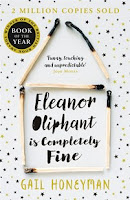The first time I saw the illustrations in the The Wildlife Winter Games I was hooked on the creative genius of Tasmanian artist and illustrator, Ben Clifford and his collaborations with author, Richard Turner. This week Ben invites you to be a spectator in the creation of the second picture book in this animal Olympic trilogy.
 |
| The Wildlife Summer Games - Richard Turner & Ben Clifford Starfish Bay. |
 |
| The Wildlife Winter Games Richard Turner & Ben Clifford Starfish Bay. |
I first met author Richard Turner in person at the launch of our first collaboration. It was to be the first of a three part series for me to illustrate; The Wildlife Winter Games. I travelled from my home of Hobart to Adelaide for the launch.
Richard created this original series that I found interesting - animals competing in Olympic Games events. Now a year later, the second in the series is upon us; The Wildlife Summer Games. Richard gave me freedom for the design and development of the illustrations. However, this became a collaboration - throwing ideas back and forth. It was a great process.
The series isn't a narrative unfolding a story. Instead, the reader is asked to decide which animal wins the gold, silver and bronze medals in each event based on their unique skills. This encourages discussion and creative thinking for the reader and, upon each reading, the result can change.
 |
© Ben Clifford from The Wildlife Summer Games. |
Before drawing anything I scribbled my first thoughts of the three word title and attempted to blend them together – Wild animals, tribal, sunset, humidity, warm colours, ritual displays.
 |
| © Ben Clifford from The Wildlife Summer Games. |
Thirty animals/athletes appear in the book. Researching each for their size and appearance is something I always enjoy (including the first book of the series to discover the rare Colossal Squid with the largest known eye diameter of all creatures - 30cm!) I keep animals realistic with an added recognisable smile or physical display of human emotion.
I've loved watching the Olympics since childhood. In The Wildlife Summer Games the host city appears like a giant playground combined through different backdrops. I wanted to capture this with each event. This was a jungle, beach, desert, tropical ponds - all different pockets of a combined world that invite us to explore.
 |
| © Ben Clifford from The Wildlife Summer Games. |
The first image that comes to my mind of the Olympics from any year is the white-striped running lanes in the stadium. It's instantly recognisable, iconic and what I found perfect for the cover.
 |
| Double page spread of the animals on the track. © Ben Clifford from The Wildlife Summer Games. |
The image I enjoy the most is the closing ceremony spread. This ties up the book displaying every animal together in celebration under fireworks, much like the Olympic ceremonies I have enjoyed. The first in the series; The Wildlife Winter Games is available. Now this - The Wildlife Summer Games - available in November. A third and final book in the series will follow. Back to work.
Ben Clifford
Tasmanian illustrator and artist














